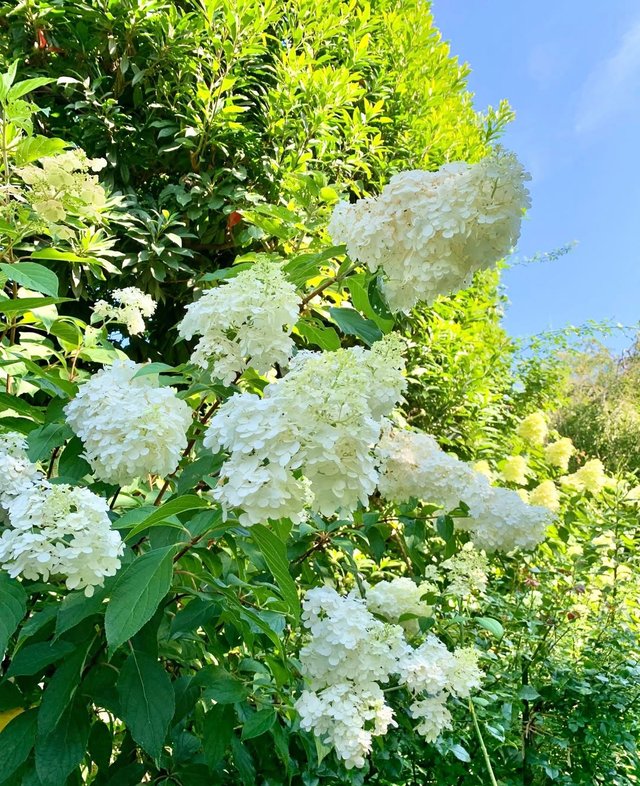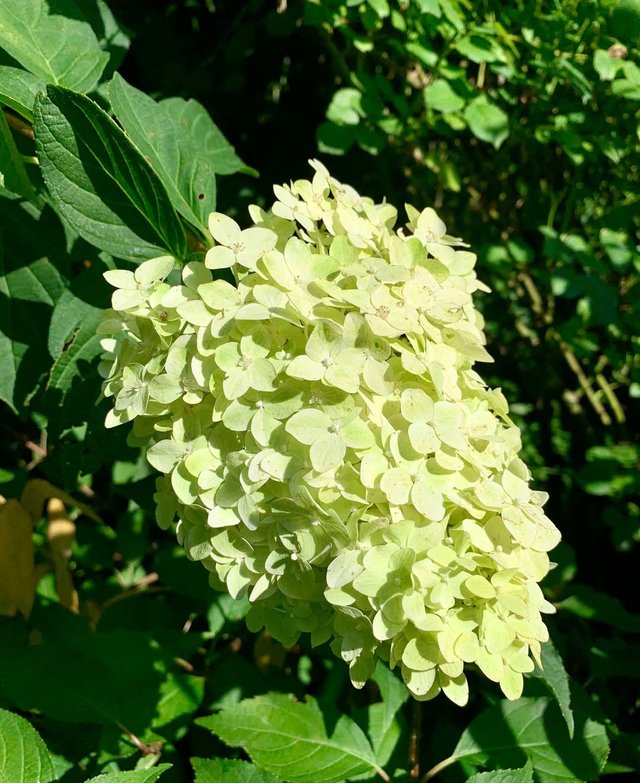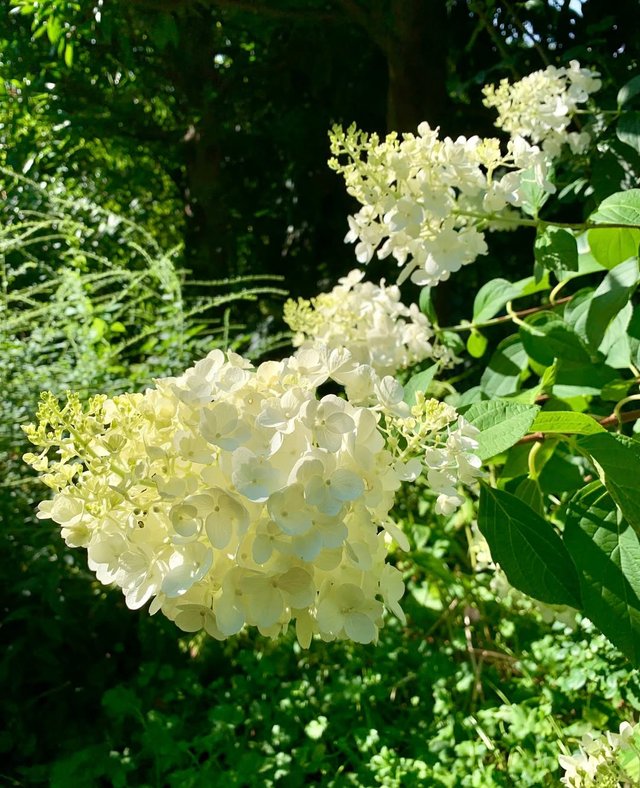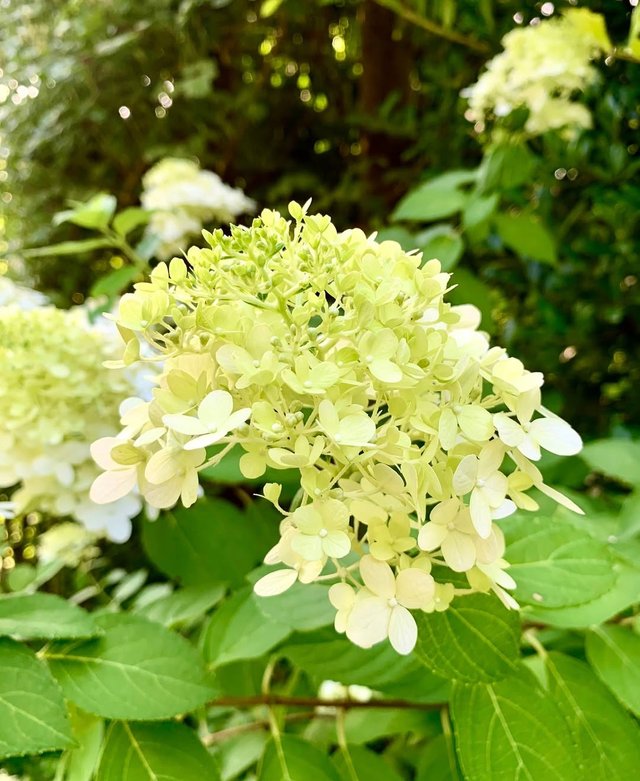Panicled Hydrangea
Among the wide world of flowering shrubs, few can rival the Panicled Hydrangea for its striking beauty, long-lasting blooms, and remarkable adaptability. Native to Asia but adored worldwide, Hydrangea paniculata brings a powerful visual impact to gardens with its dramatic cone-shaped flower clusters, rich textures, and elegant transformation through the seasons.From its lush summer blossoms to its autumnal pink hues, the panicled hydrangea is a plant that evolves beautifully — and thrives where others falter.
Panicled hydrangeas are known for their pyramidal flower clusters (panicles), which set them apart from the more rounded mophead or lacecap hydrangeas. These massive blooms, often reaching 6–12 inches in length, sit atop strong, upright branches and appear in abundance.Begins as creamy white, then matures to soft pink, rose, or even greenish-red in fall.Mid to late summer through early fall.Cone-shaped panicles.
One of the most attractive features of Hydrangea paniculata is its tolerance to sun and cold — making it an ideal hydrangea for temperate and even northern climates.Full sun to partial shade.Well-drained, fertile soil; slightly acidic to neutral pH.Moderate; consistent moisture, especially during bloom season.Best pruned in late winter or early spring, since it blooms on new wood.Light feeding in spring can boost blooms.Since panicled hydrangeas bloom on new wood, they are less prone to weather-related bloom failure — unlike bigleaf hydrangeas that bloom on old wood.




